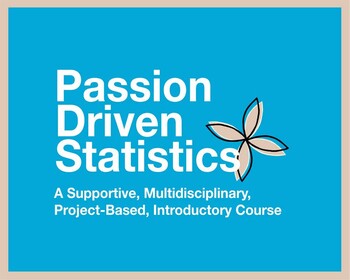Passion-Driven Statistics E-book (Introductory/AP Statistics Course Textbook)
- PDF
Description
Passion-Driven Statistics is an NSF-funded, multidisciplinary, project-based curriculum that supports students in conducting data-driven research, asking original questions, and communicating methods and results using the language of statistics. The curriculum supports students to work with existing data covering psychology, health, earth science, government, business, education, biology, ecology and more. From existing data, students are able to pose questions of personal interest and then use statistical software (e.g. SAS, R, Python, Stata, SPSS) to answer them. The e-book is presented in pdf format for ease of use across platforms. It can also be customized by downloading and editing the .iba file (available via email).
Github ebook https://bit.ly/PDSe-book
PDF version of ebook https://bit.ly/PDSpdf
Please visit the https://passiondrivenstatistics.com/ to access published articles, some resources, promotional videos of students and instructors discussing their experiences with the course.
All course resources are FREE! Those interested in assignments, handouts, exams, etc. should email to gain access as those are not on the main website.
For more information, contact Lisa Dierker, ldierker@wesleyan.edu or Kristin Flaming, kristin.flaming@gmail.com.




